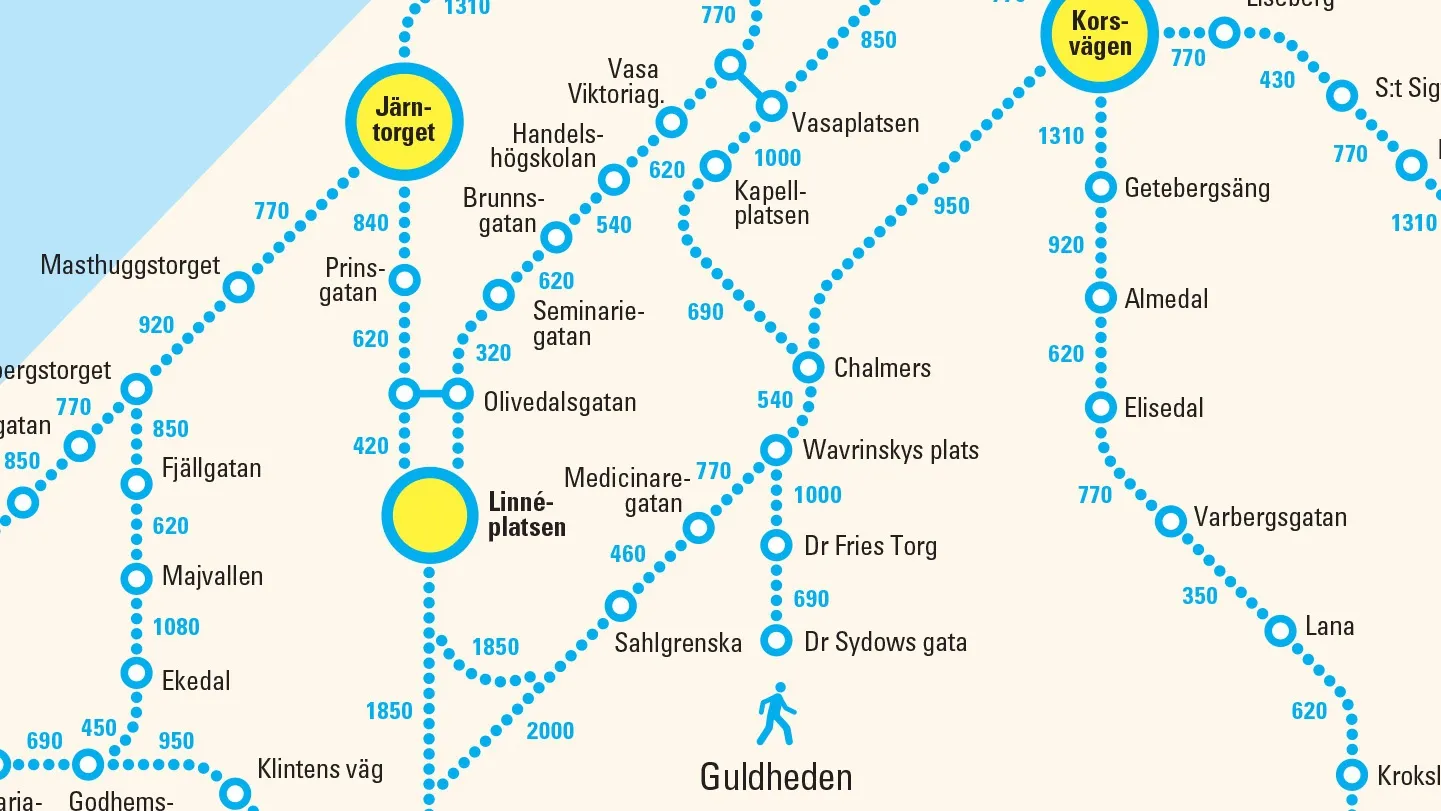
A public transport company in the city of Gothenburg, Sweden, is asking travellers to walk rather than take its buses and trams.
To promote social distancing and to ease overcrowding, Västtrafik has produced a new version of its map showing the number of steps between bus and tram stops in the city - calling it "a simple reminder that distances are actually quite short in the city centre".
“If more people have the possibility to walk instead of taking the bus or tram in Gothenburg, we encourage that," said Lars Backström, CEO of Västtrafik.
"That way we make it safer for those who really need to use public transport."
The company says that people are already choosing alternatives to public transport post-Covid, taking the bus or cycling to work.
More than 30% claim they walk more now compared to before the pandemic, it adds.
The new map is featured in print adverts and on billboards as part of an initiative created by Forsman & Bodenfors.










